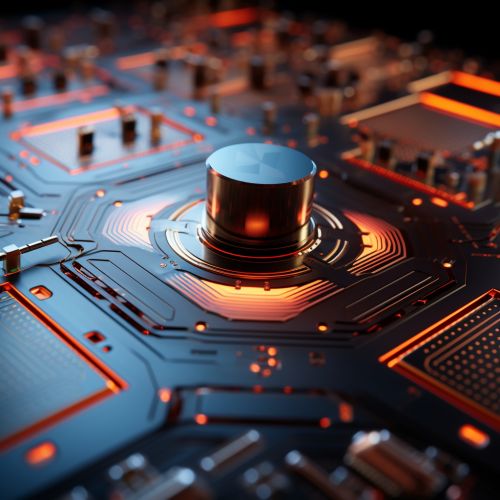Superconducting Circuits
Introduction
Superconducting circuits are electrical circuits composed of superconducting materials, which allow for zero electrical resistance and the expulsion of magnetic fields. These circuits are fundamental components in a variety of high-tech applications, including quantum computing and magnetic resonance imaging (MRI).


Superconductivity
Superconductivity is a quantum mechanical phenomenon where certain materials exhibit zero electrical resistance and expulsion of magnetic fields when cooled below a certain temperature, known as the critical temperature. This state is characterized by the formation of Cooper pairs, which are pairs of electrons with opposite momentum and spin that move together through a superconductor without scattering off impurities and lattice vibrations, thus carrying electrical current without resistance.
Components of Superconducting Circuits
Superconducting circuits are typically composed of several key components, including Josephson junctions, superconducting quantum interference devices (SQUIDs), and superconducting resonators.
Josephson Junctions
A Josephson junction is a type of superconducting device that consists of two superconducting electrodes separated by a thin insulating barrier. This device is named after British physicist Brian D. Josephson, who predicted the mathematical relationships for the current and voltage across the junction. Josephson junctions are crucial components in superconducting circuits due to their unique properties, such as the Josephson effect, which allows for supercurrent flow across the junction even in the absence of a voltage difference.
Superconducting Quantum Interference Devices (SQUIDs)
Superconducting quantum interference devices, or SQUIDs, are superconducting circuits that are highly sensitive to magnetic fields. A SQUID consists of two or more Josephson junctions arranged in a loop. The device operates based on the principle of quantum interference, where the quantum states of the superconducting current flowing through the junctions interfere, leading to a measurable change in the device's electrical properties.
Superconducting Resonators
Superconducting resonators are another key component in superconducting circuits. These devices are essentially superconducting wires shaped into a loop, which can store and release energy at specific frequencies. Superconducting resonators are often used in quantum computing to store and manipulate quantum information.
Applications of Superconducting Circuits
Superconducting circuits have a wide range of applications in various fields, including quantum computing, medical imaging, and telecommunications.
Quantum Computing
In quantum computing, superconducting circuits are used to create quantum bits, or qubits, which are the fundamental units of quantum information. Superconducting qubits are typically made from a small circuit of superconducting materials that can exist in two states simultaneously, thanks to the principles of quantum mechanics. This allows quantum computers to perform complex calculations much more efficiently than classical computers.
Medical Imaging
In the field of medical imaging, superconducting circuits are used in MRI machines to generate high-quality images of the human body. The superconducting magnets in an MRI machine create a strong and stable magnetic field, which is necessary for the machine to function properly.
Telecommunications
In telecommunications, superconducting circuits are used in superconducting filters to improve the signal quality in wireless communications. These filters are capable of separating signals at different frequencies with high precision, which is crucial for the efficient transmission of data.
Challenges and Future Directions
Despite the many advantages of superconducting circuits, there are also several challenges that need to be addressed. One of the main challenges is the issue of decoherence, which is the loss of quantum information due to interactions with the environment. This is a significant problem in quantum computing, as it limits the amount of time that quantum information can be stored and processed.
Another challenge is the difficulty of maintaining the superconducting state, as it requires cooling the materials to very low temperatures, often close to absolute zero. This makes the practical implementation of superconducting circuits challenging and expensive.
However, ongoing research in the field of superconductivity is aimed at addressing these challenges. For example, scientists are exploring new materials and designs for superconducting circuits that can operate at higher temperatures, which would make them more practical for real-world applications.
